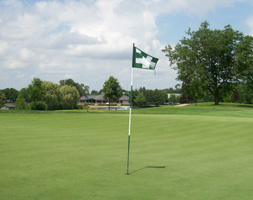 It’s becoming more evident that the golf course industry is in need of a change in its business model. While most courses are faced with the reality of less play, those that are based around a real estate venture basically are getting hit twice. Once upon a time a golf course was the prized amenity used to sell the surrounding dirt in the form of homes. In today’s environment, that isn’t a recipe for success and its unknown whether the world will revert back to its ways anytime soon.
It’s becoming more evident that the golf course industry is in need of a change in its business model. While most courses are faced with the reality of less play, those that are based around a real estate venture basically are getting hit twice. Once upon a time a golf course was the prized amenity used to sell the surrounding dirt in the form of homes. In today’s environment, that isn’t a recipe for success and its unknown whether the world will revert back to its ways anytime soon.
The stubbornly slow economy, poor weather and course overbuilding have private country clubs scrambling for members and public daily fee courses praying for more players. Some private clubs have relaxed membership requirements to woo prospects, with payment of initiation fees delayed or reduced. Some courses have cut greens fees.
But cost-conscious families, many affected by the economic downturn, still aren’t readily stroking checks to join clubs whose memberships can easily run to $25,000 with some above $50,000, in addition to monthly dues and food and beverage charges. Clubs in the best shape to make it are those known as legacy clubs, with deep and affluent membership bases, and those offering a quality golf experience at a reasonable price.
“Business golf” is down, too, with executive perks trimmed and employees spending more time in the office. This summer’s extreme heat, on top of last winter’s endless rain, hasn’t helped.
Click here to read more.

